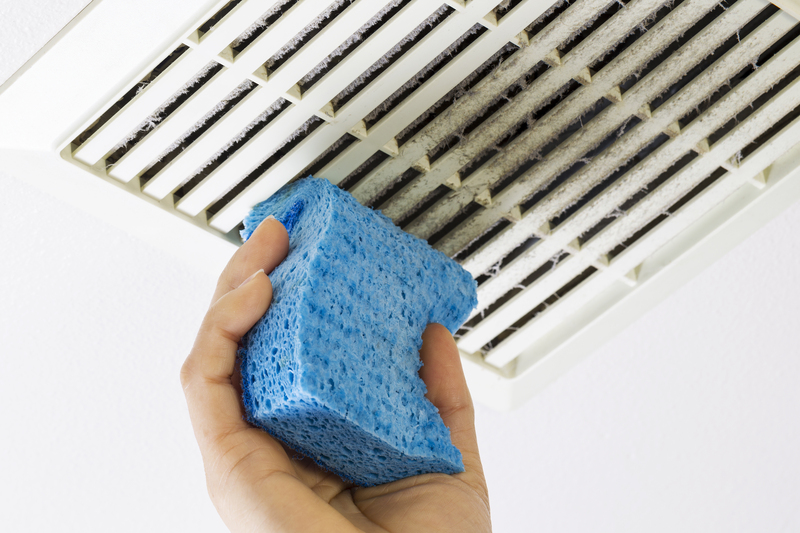Indoor Air Quality: A Key Player in Health for Homes and Businesses
Posted on 15/09/2025
Indoor Air Quality: A Key Player in Health for Homes and Businesses
In today's fast-paced world, indoor air quality is increasingly recognized as an essential factor impacting the health and well-being of those who occupy our homes and businesses. Understanding the importance of indoor air pollution and its links to human health is crucial for property owners, facility managers, employees, and families. This comprehensive guide provides in-depth insights into the significance of indoor air quality (IAQ), the factors affecting it, the consequences of poor air, and effective solutions to maintain optimal air conditions for a healthier space.
What is Indoor Air Quality?
Indoor air quality refers to the condition or the cleanliness of air within enclosed environments, including homes, offices, restaurants, schools, hospitals, and other commercial or industrial spaces. It relates to the presence of pollutants, humidity levels, ventilation, and temperature, which collectively determine the healthiness of the air we breathe indoors.
- Airborne contaminants: Dust, pollen, pet dander, mold spores, and other microscopic particles.
- Chemical pollutants: Volatile organic compounds (VOCs), gases from cleaning products, paints, and furnishings.
- Biological agents: Bacteria, viruses, and fungi thriving in moist environments.
- Physical factors: Humidity, temperature, and ventilation issues affecting comfort and well-being.
Maintaining good indoor air quality promotes a comfortable, safe environment and protects against various health risks.

Why Indoor Air Quality Matters
According to the Environmental Protection Agency (EPA), the average person spends nearly 90% of their time indoors, whether at home, work, or public venues. Consequently, the quality of indoor air we inhale daily can significantly affect our health, productivity, and comfort. Let's explore why improving air quality indoors is vital:
1. Impact on Health
Poor indoor air can cause or worsen numerous health problems, including:
- Respiratory diseases such as asthma, allergies, and bronchitis.
- Eye, nose, and throat irritation due to airborne irritants.
- Headaches, fatigue, and dizziness linked to chemical exposures.
- Long-term risks like certain cancers and chronic respiratory illnesses from prolonged exposure to pollutants.
2. Productivity and Cognitive Performance
Studies have shown a direct correlation between good indoor air quality and improved mental clarity, productivity, and decision-making, especially in office and educational settings. Clean air leads to fewer sick days, better focus, and greater output.
3. Comfort and General Well-Being
Controlling humidity, odors, and contaminants creates a more pleasant atmosphere. This benefits businesses by enhancing customer satisfaction and employee retention, and it promotes relaxation and contentment at home.
Common Sources of Indoor Air Pollution
Understanding the sources of indoor air contaminants is crucial for effective control. Both homes and businesses may host a variety of pollutants, originating from multiple sources:
- Building materials and furnishings: New carpets, composite wood products, and upholstery may emit volatile organic compounds (VOCs).
- Cleaning products and personal care items: Aerosols, sprays, and chemical solvents produce harmful gases.
- Heating and cooking appliances: Gas stoves, heaters, and fireplaces may release carbon monoxide and nitrogen dioxide.
- Moisture and humidity: Leaks and condensation encourage mold and dust mites.
- Outdoor air infiltration: Pollens, car exhaust, and industrial pollutants enter through windows and doors.
- Occupant activities: Smoking, use of candles, and hobbies (like painting or crafting) can increase air pollution indoors.
Health Implications of Poor Indoor Air
Exposure to unhealthy air indoors--often more polluted than outdoors--poses serious health risks. Vulnerable populations, such as children, elderly adults, and those with preexisting conditions, are especially at risk.
- Short-term symptoms: Coughing, sneezing, headaches, watery eyes, and nausea.
- Chronic issues: Chronic bronchitis, severe allergic reactions, and immune system suppression.
- Severe illnesses: Long-term exposure may cause lung cancer, heart disease, and developmental issues in children.
*Diseases like "sick building syndrome" are directly linked to persistently poor air quality in office buildings and commercial spaces.
How to Measure and Monitor Indoor Air Quality
To manage and improve indoor air quality, regular assessment is vital. Here's how you can evaluate the air in your home or workplace:
1. Use Air Quality Monitors
Smart air monitors can detect levels of pollutants such as VOCs, carbon monoxide, particulate matter (PM2.5), humidity, and temperature in real time.
2. Professional IAQ Assessments
Environmental consultants or HVAC professionals can provide comprehensive analyses, including mold inspections, radon testing, or identifying sources of contamination.
Effective Strategies to Improve Indoor Air Quality
Enhancing indoor air quality involves a combination of removing pollution sources, improving ventilation, and adopting best practices tailored to your building's unique needs.
1. Source Control
- Opt for low-VOC paints, finishes, and furnishings.
- Store chemicals, solvents, and cleaning products properly, and dispose of them safely.
- Address leaks, condensation, and standing water quickly to prevent mold growth.
2. Ventilation Improvements
- Open windows and doors regularly to allow fresh air movement.
- Install mechanical ventilation or energy recovery ventilators (ERVs) in airtight buildings.
- Use kitchen and bathroom exhaust fans to expel odors and humidity.
3. Air Cleaning Technologies
- Employ HEPA (high-efficiency particulate air) filters in HVAC systems to reduce airborne particles.
- Consider portable air purifiers for additional purification in high-use areas.
- Inspect and replace old furnace and air conditioning filters on schedule.
4. Maintaining Optimal Humidity Levels
- Keep relative humidity between 30-50% to limit dust mites and mold.
- Use dehumidifiers in damp areas, and humidifiers if air is too dry in winter.
Indoor Air Quality Tips for Homes
- Regularly clean floors, carpets, and bedding to minimize dust and allergens.
- Limit candle burning and indoor smoking to avoid introducing toxic compounds.
- Keep houseplants like spider plants or peace lilies known for natural air-cleaning properties.
- Ensure adequate kitchen ventilation especially when using gas appliances.
Indoor Air Quality Solutions for Businesses
- Schedule frequent HVAC maintenance to keep systems running efficiently and cleanly.
- Install commercial-grade air purification units in conference rooms and open-plan offices.
- Promote green janitorial practices by using non-toxic cleaning agents.
- Design flex spaces with CO2 sensors to automatically adjust ventilation as occupancy changes.
Green Building Certifications and IAQ
Modern construction standards increasingly emphasize the importance of indoor environmental quality. Certifications such as LEED (Leadership in Energy and Environmental Design), WELL Building Standard, and Fitwel include robust criteria for air quality, ventilation, and material selection. Earning one of these certifications not only benefits occupants' health but can also enhance a property's value and brand perception.
Future Trends in Indoor Air Quality Management
As awareness of indoor air quality grows, the market is responding with smarter technologies and innovative approaches:
- IoT-based IAQ sensors integrated with building automation for ongoing monitoring and ventilation control.
- UV-C light technologies within HVAC systems for sterilization of bacteria and viruses.
- Advanced filtration systems targeting ultra-fine particles and pathogens, beneficial for healthcare spaces.
- Biophilic design elements such as living walls and green roofs to improve air naturally and mentally refresh occupants.

Frequently Asked Questions About Indoor Air Quality
How often should I test indoor air quality?
It's advisable to use an air monitor year-round, with professional assessments every 2-3 years or after significant renovations, water damage, or noticeable health symptoms among building occupants.
Are air purifiers worth the investment?
Yes! Especially models with HEPA filters or those targeting specific airborne contaminants such as allergens, dust, smoke, and chemical vapors.
Can indoor plants really improve air quality?
While certain plants can absorb some toxins, they are best used as a supplement to, not a replacement for, mechanical filtration and ventilation improvements.
Conclusion: Prioritizing Indoor Air Quality for Better Health
In both residential and commercial environments, attention to indoor air quality is fundamental to promoting health, safety, and comfort. By recognizing pollution sources, employing effective air-cleaning strategies, and adopting future-ready solutions, you can protect yourself, your family, employees, and customers from harmful exposure and support overall well-being.
Make it a priority to evaluate, improve, and maintain indoor air conditions. Healthy air is the cornerstone of productive businesses and vibrant homes--invest in it, and reap the energetic and economic rewards.



